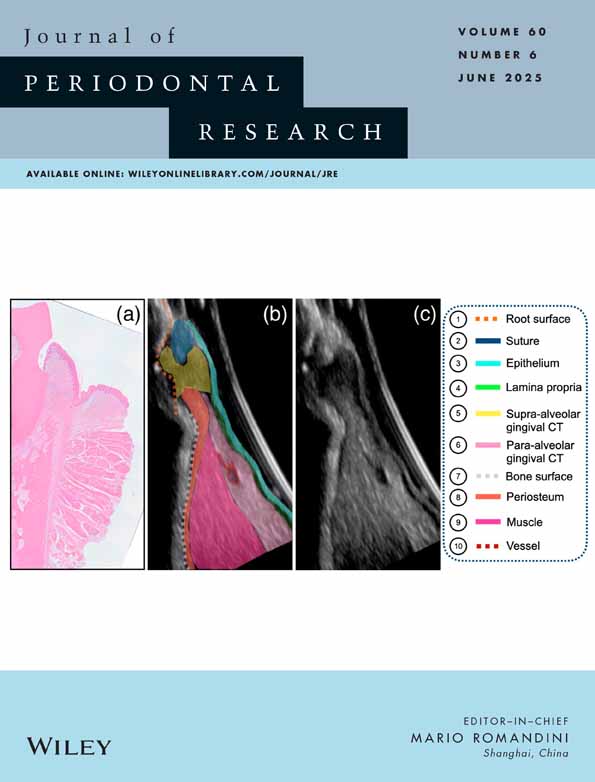Study of periodontal disease in children and young adolescents
I. Effect of age, sex and gingival inflammation on crevice fluid volume, pocket depth, pH of supragingival plaque and crevice, collagenase activity and urea
Abstract
Forty children from 4 groups (pre-and post-pubertal males and pre-and post-pubertal females) were examined in relation to periodontal disease. The following parameters were examined: i) crevice fluid volume, ii) pocket depth, iii) pH of the supragingival plaque and crevice pH, iv) collagenolytic activity of the crevice fluid, and v) urea in the crevice fluid. Each of the variables studied was subjected to a 3-factor factorial analysis of variance. The factors considered were age (pre-pubertal vs. post-pubertal), sex (male vs. female) and inflammation index (0 vs. 1 vs. 2 and 3). In this study the corresponding means were compared and graphed. The results are prepared as the effects of age, sex and gingival inflammation and the various interactions. In general, the amount of fluid was higher in females than in males; the amount of fluid was greater in the post-pubertal group than in the pre-pubertal group. The fluid volume varied directly (P < 0.01) with increasing inflammation and this held true for both the sex and age groups. Crevice depth followed the same trend. The pH of plaque and crevice of females with healthy gingivae was lower in the post-pubertal than in the pre-pubertal group; males demonstrated an opposite response. In inflamed gingivae, both pH values were lower in pre-pubertal females than in the post-pubertal group. In post-pubertal males, however, the response to inflammation showed an opposite trend to that of females both in the pre-and post-adolescent groups. The pH responses appear to be related to hormonal changes which occur during puberty. The visible collagen lysis in the crevice fluid was higher in females than in males, and appeared to increase with age. The percentage of soluble collagen increased with increasing inflammation. Crevicular fluid total urea content actually rose with inflammation, but the concentration decreased due to the increase in fluid volume.




